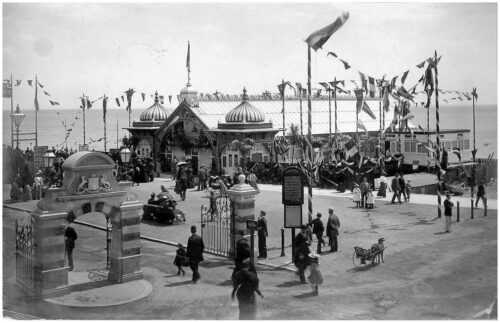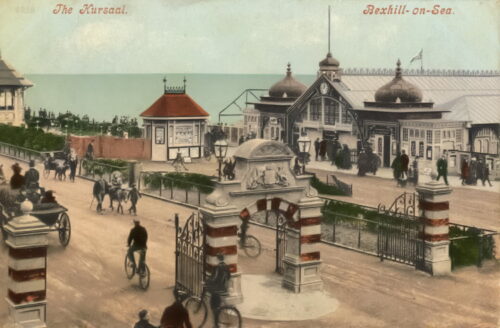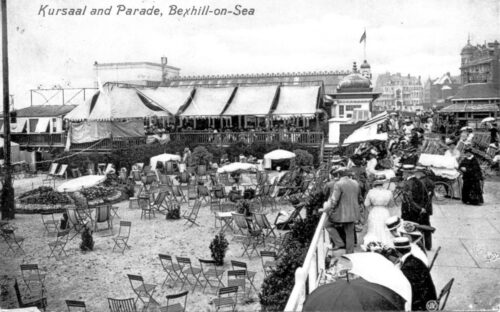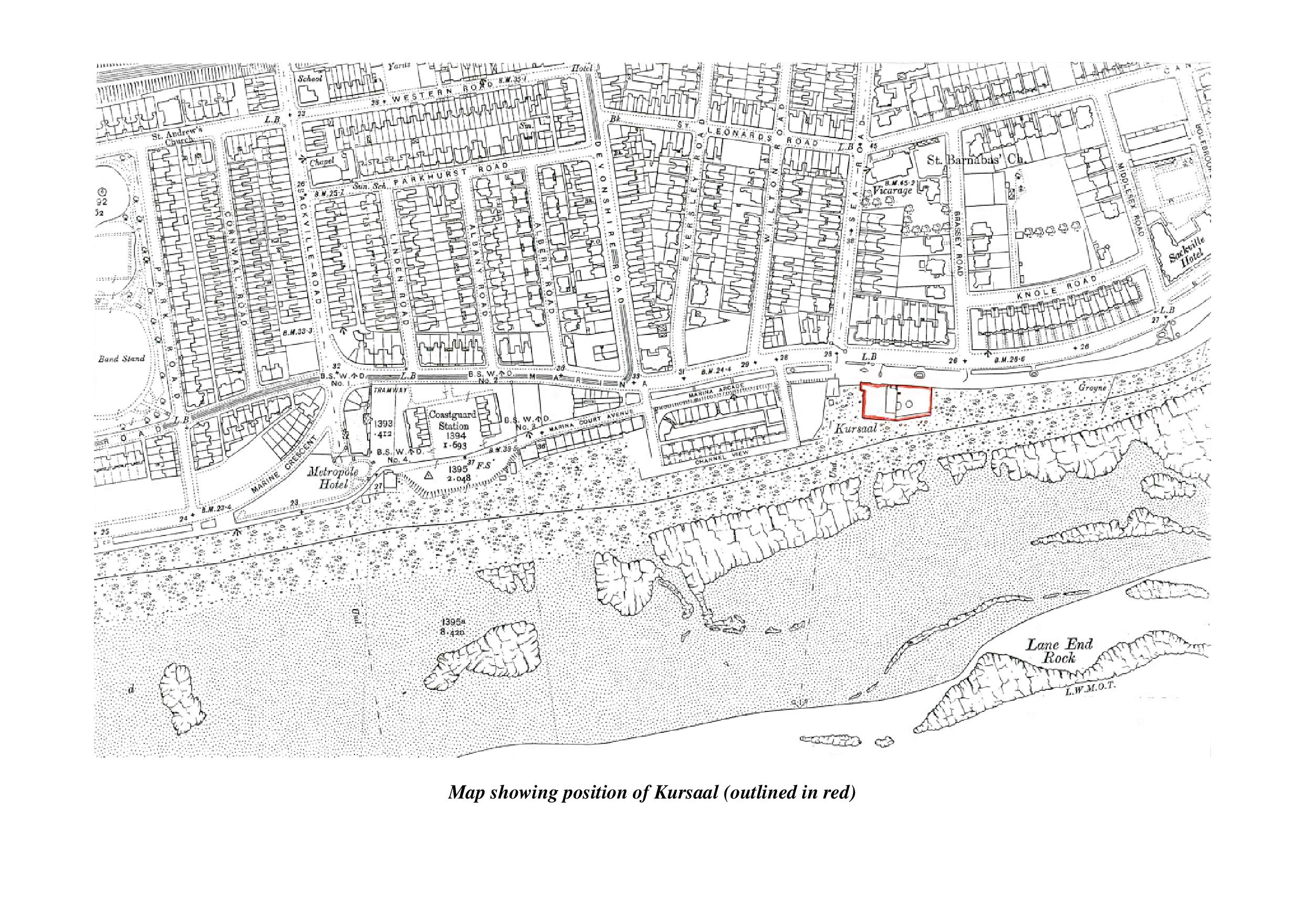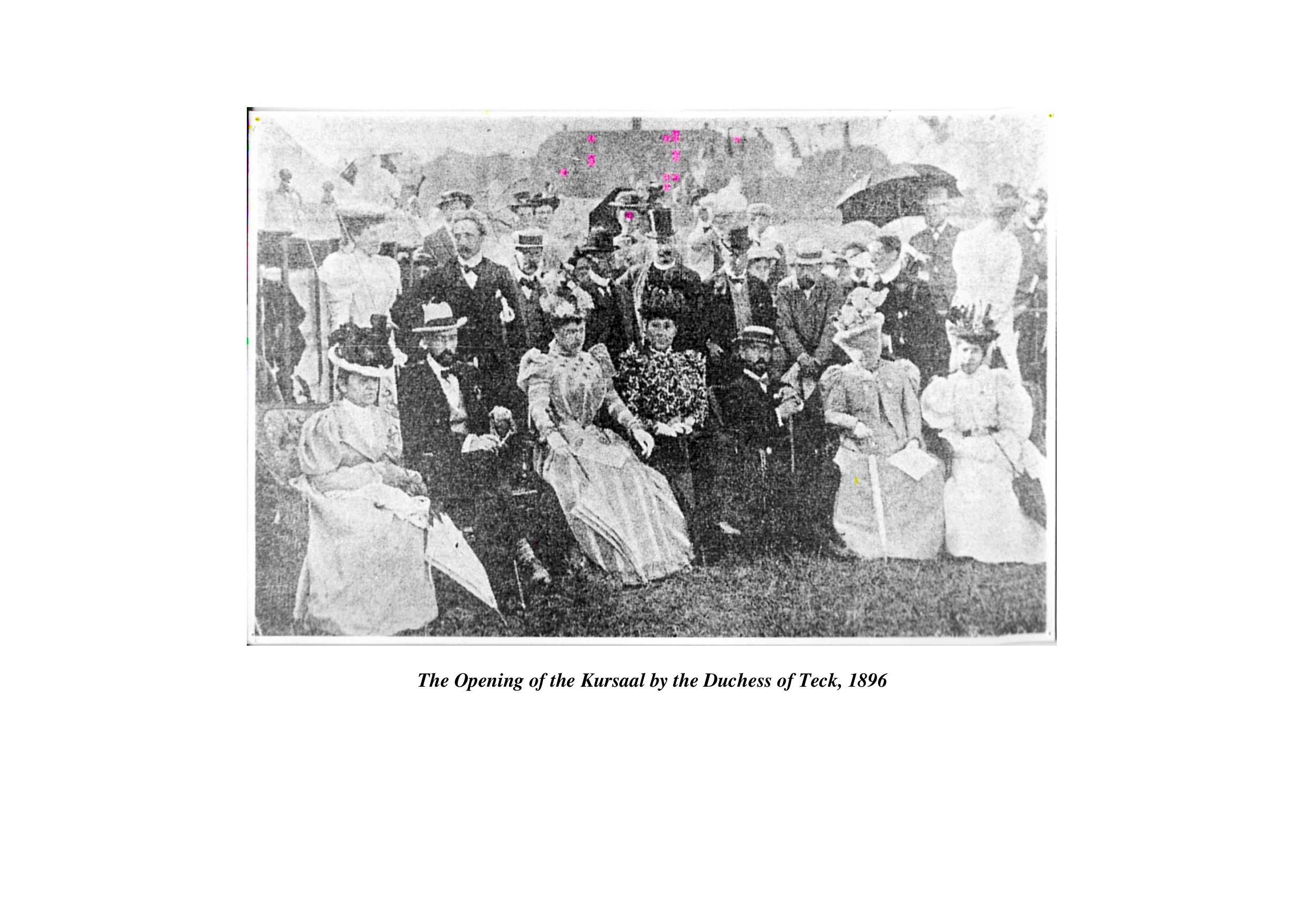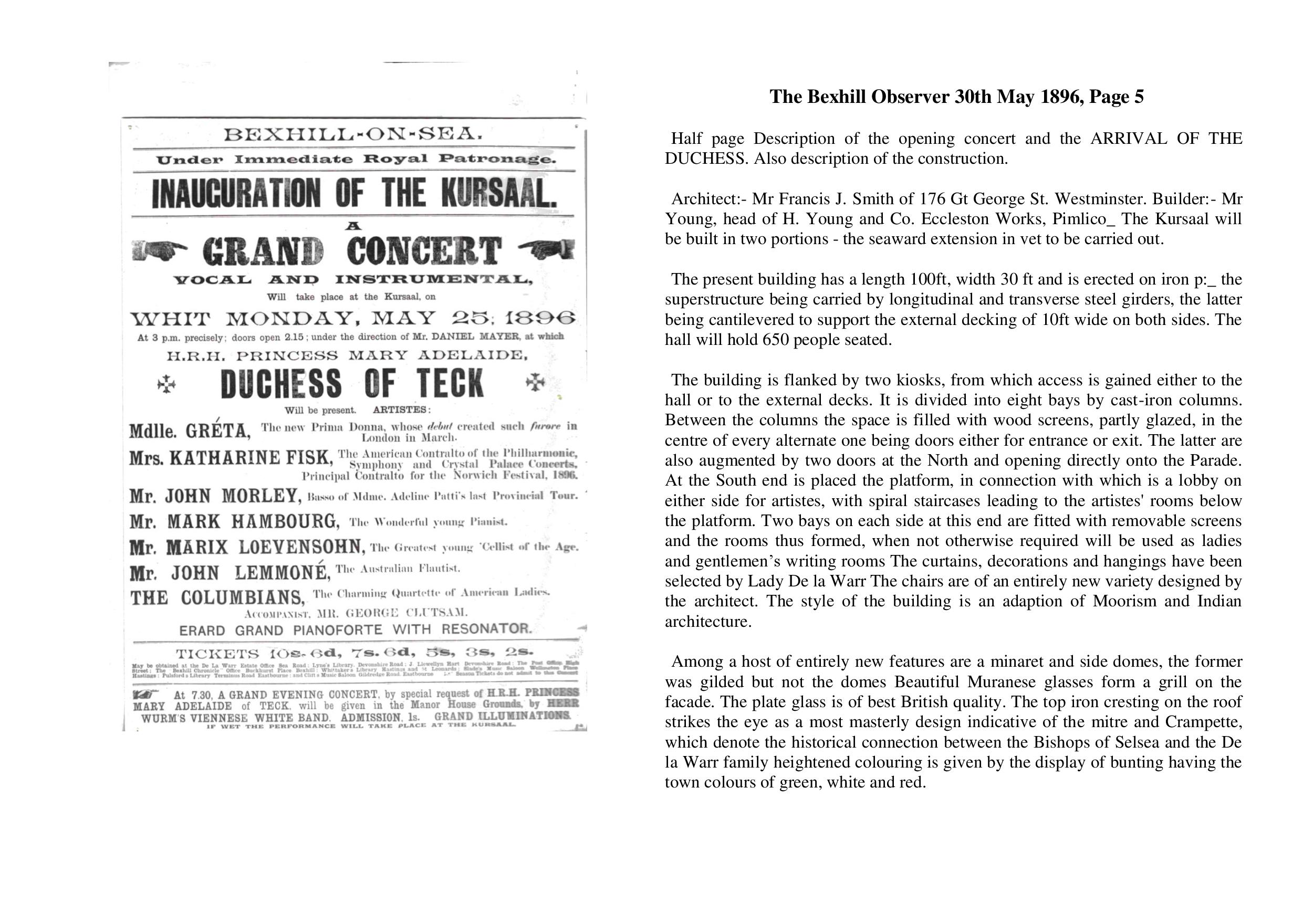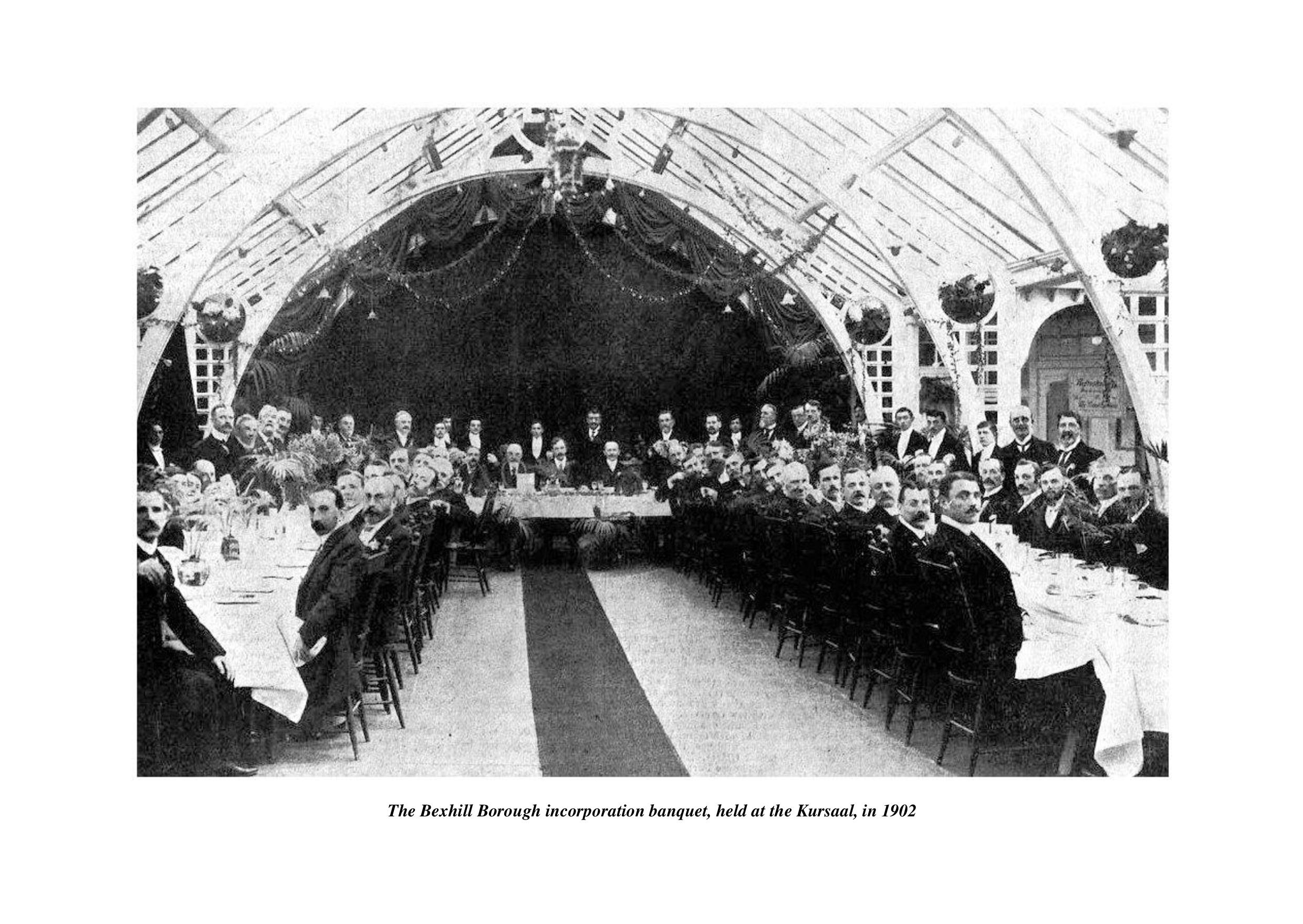The Kursaal was built in 1896 by the 8th Earl De La Warr who, also, provided the finance. It was an entertainment pavilion that included separate reading rooms for ladies and gentlemen. In 1894 the Earl hired Stanislaus Wurm and his White Viennese Band to give concerts on the De La Warr Parade but, when the Kursaal was opened they moved into the Kursaal.
In 1900, James Glover, Director of Music at Drury Lane, took over the lease of the Kursaal. He helped to promote Bexhill as a resort and went on to become Town Mayor.
The Kursaal was demolished in 1936 when it was replaced by the De La Warr Pavilion and the Bexhill Sailing Club now stands on the site.
Unlike many seaside resorts Bexhill has never had a pier, although a number of projects were put forward.. The Kursaal is the closest thing to a pier ever to be constructed in the town and indeed the original project was for a pier, but only the land-ward end was constructed.
The Kursaal projected back over the beach and, being partially supported on piles, meant it was suspended over the water at high tide. In 1901 a proposal was put forward to finish the original project and extend the Kursaal into the sea and make it a true pier but the scheme fell through.
In all, the 8th Earl’s plan for Bexhill had only a limited success, with the First World War ending its close European links and curtailing the lifestyles of the aristocracy for whom he intended his resort. Because of its German connection, after the war, the Kursaal was re-named “The Pavilion”.
It was succeeded, as the main social and entertainments venue, by the De La Warr Pavilion, which was built in 1935 by Bexhill Borough Council.
However, it was very much the efforts of the 9th Earl that saw the new Pavilion built – his concept of a Pavilion for the people was very different from that of his father’s Kursaal.


